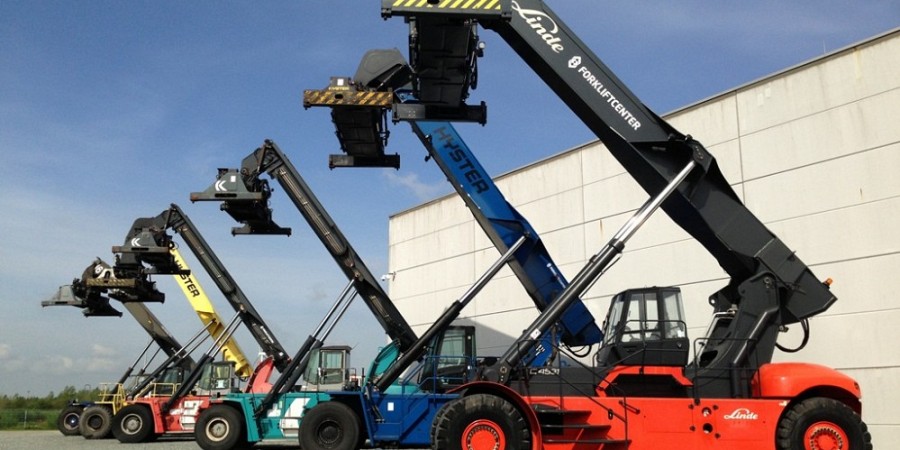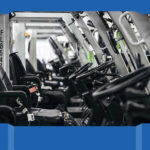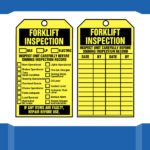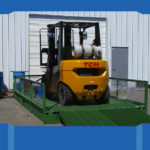
Top 20 lift truck suppliers
Thankfully for all stakeholders, the market is now enjoying increased stability, as evidenced in Modern’s annual list of the Top 20 lift truck suppliers.
The past few years have been a roller coaster for the lift truck industry, which has proved innovative and resilient enough to rapidly overcome the tumult of the Great Recession. But the market is a far cry from its pre-downturn self, as fleet management and a proliferation of new technologies have reshaped how lift trucks are procured and used.

Lift Truck Market
Although the combined value of the list grew less than a percent, 2015 was a good year for lift truck sales. While several companies appear to have reported lesser revenues, many also reported growth in unit sales as well as net revenue increases in local currency before conversion to the relatively strong U.S. dollar.
Brett Wood, chairman of the Industrial Truck Association (ITA) and president and CEO of Toyota Material Handling North America, says the global lift truck market and the broader materials handling industry continues to be relatively strong, reflecting strong economies particularly in North America and Europe. In fact, several countries recorded lift truck sales at all-time high levels.
“We had a strong performance in 2015, even with the challenges that come with significant growth,” Radous from Unicarriers Americas says.
The most significant observation from the sales data in 2015 is the growth of electric lift trucks and the decline of internal combustion (IC) models. Electric models in Class 1, 2 and 3 combined grew by 8% over 2014, whereas IC models in Class 4 and 5 declined globally by 10% compared to 2014. Even more significantly, electric lift trucks jumped from 55% of the global industry in 2014 to now making up 60% of the global orders.
“Sustainability is the new normal as customers are aware of the environmental impact their operations can have on society,” Wood says. “Also, the accelerated growth of e-commerce is changing the materials handling industry and logistics in general. The popularity of electric warehousing products will increase to feed this demand for e-commerce fulfillment and DCs.”
The Top 10
The materials handling division of Toyota added more than $630 million in revenues, comfortably passing the $8 billion mark after an 8.2% increase in revenues ($8.35 billion) and a 7.6% increase in units sold (239,000). The figures reflect the forklift business of Taiwanese manufacturer Tailift, which Toyota acquired in late 2014.
In second place, KION added 6.5% for a total of $5.66 billion after introducing a new brand to North America in 2015 and acquiring Egemin Automation, a manufacturer of automatic guided vehicles. Its North American brands now include Linde, Still, Baoli and Egemin.
No. 3 Jungheinrich‘s revenues were up more than 10% year over year in Euro, after a 13% increase in order intake and a 9% increase in produced units. In addition to launching a new horizontal orderpicker and narrow-aisle forklift, in October 2015 the company acquired Munichbased MIAS Group, a provider of automated warehouse solutions including stacker cranes and load handling equipment. The news accompanied the Jungheinrich board of management’s creation of a logistics systems mandate. According to a statement, the mandate will cover the entire logistics systems division, “a field of business in which the group will grow significantly and that is strongly driven by technology.” “Our performance in 2015 was very good,” says Hans- Georg Frey, chairman of the board of management of Jungheinrich AG. “This is evidenced by the double-digit growth rates posted by incoming orders, net sales, EBIT and EBT, the gains in market share in Europe and worldwide, and the important strategic projects.”
Crown Equipment reported nearly 6% higher revenues for 2015 and reclaimed fourth place after three years at No. 5. At $2.64 billion, Crown surpassed Hyster-Yale by $62 million.
In fifth place, Hyster-Yale‘s unit sales fell by less than a percent to 86,900, contributing to a 6.8% decline in reported revenues that the company attributed largely to the strength of the dollar in 2015 as compared to 2014. In addition, a statement explained that revenues in the Americas declined partly as a result of a shift in trucks sold from higher-priced Class 5 trucks to lower-priced Class 3 warehouse trucks. In early 2016, Hyster-Yale announced the acquisition of Penta Holding, the majority holder of Bolzoni S.p.A., a leading manufacturer of forklift attachments.
Mitsubishi Nichiyu, which includes Cat Lift Trucks, retained sixth place after revenues decreased by $147 million, or 6.8%, to $2.01 billion. However, a statement from the company clarified that 2014 revenue included 15-month results for some overseas subsidiaries, whereas 2015 revenue reflects 12-month results according to the unified fiscal calendar starting April 1 and ending March 31. The company also reported a 4.4% increase in produced units for a total of 60,752 units in 2015.
UniCarriers Americas again held the No. 7 spot after 6% growth to $1.6 billion in revenues. According to James J. Radous III, president of UniCarriers Americas, the past year included the addition of new factory stores, insourcing of equipment parts and a major systems upgrade. “We had a strong performance in 2015, even with the challenges that come with significant growth,” Radous says. “Vertical integration and new products will continue to be part of our high-growth strategies moving forward. While building physical and systematic infrastructure for continued growth, our success can be attributed to true reliability in both our products and our people.”
No. 8 Anhui Forklift, makers of the Heli brand, shipped 74,392 units in 2015, a decrease of 10%, which contributed to a 19% fall in revenues to $907 million. In 2015 the company launched a second brand, CHL, which it says is intended mainly for the emerging market.
After several years in seventh place and with revenues exceeding $1 billion, Komatsu slipped to 10th place last year. The company is now No. 9 as revenues fell a further 15% to $760 million.
Hangcha, the Chinese manufacturer of the Hangcha and HC brands, dropped out of the Top 10, shedding three positions in the ranking after a 27% drop in revenues. This made way for Clark Material Handling to break into the Top 10 for the first time in the history of our list.









